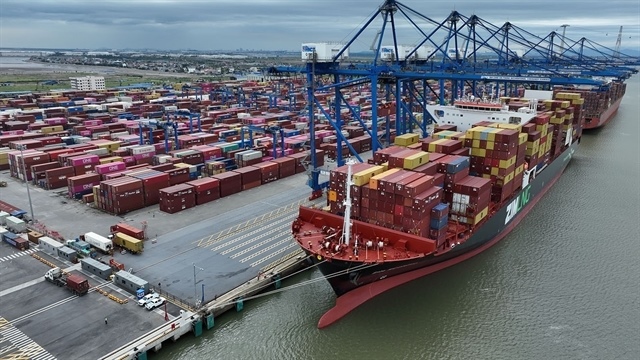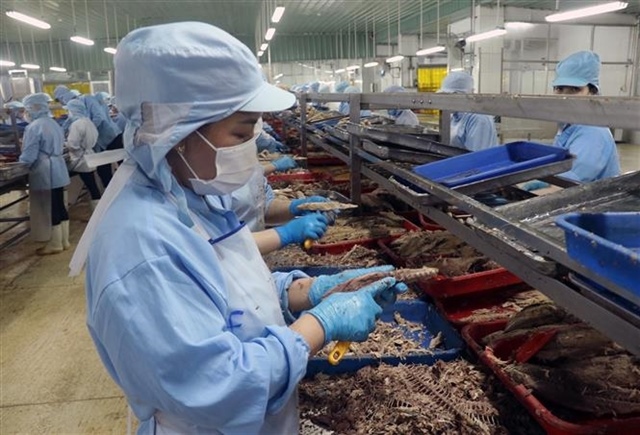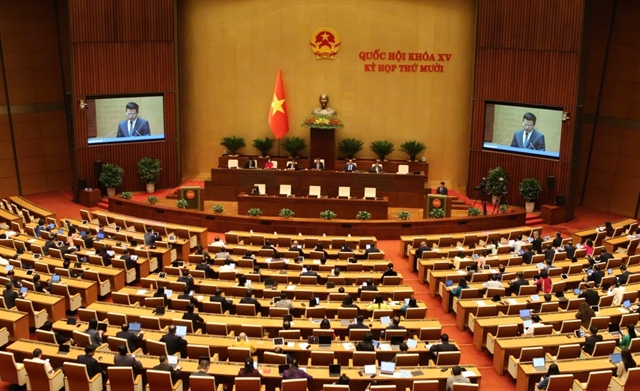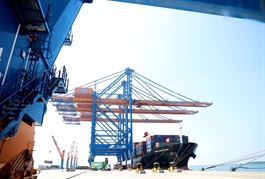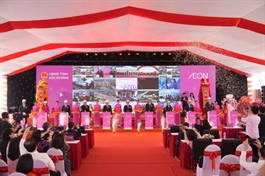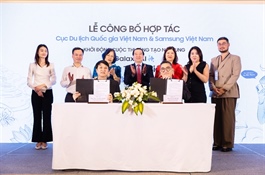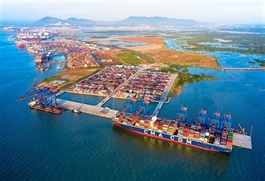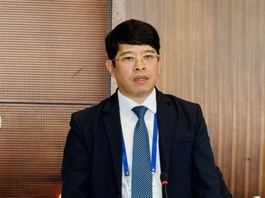Revised national energy plan prioritises renewables and grid upgrades
Revised national energy plan prioritises renewables and grid upgrades
The revised Power Development Plan VIII (PDP8), approved on April 15, marks a policy shift towards cleaner energy and modern infrastructure, targeting up to 165GW of installed capacity by 2030 with renewables playing a central role.
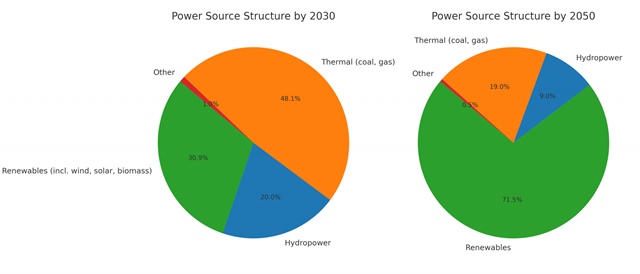
Vietnam's power source structure by 2050 |
The revised plan underscores Vietnam's commitment to advancing renewable energy and modernising its power infrastructure to ensure energy security and support sustainable economic growth.
PDP8 outlines an ambitious capacity expansion, aiming for between 155.6 and 165.6GW of total installed power generation by the end of this decade. Renewables are expected to contribute significantly, with wind power–both onshore and offshore–accounting for as much as 55GW, solar up to 32GW, and over 3GW from biomass and waste-to-energy sources.
The push for clean energy is repositioning regions like Ninh Thuan, Binh Thuan, and key Mekong Delta provinces as emerging energy hubs. Their natural resource advantages, coupled with improved local investment conditions, are drawing increased interest from both domestic and international stakeholders.
Grid infrastructure development also forms a critical component of the plan. More than $18 billion is being allocated for upgrading and expanding Vietnam’s transmission network through 2030. Over 33,500km of high-voltage transmission lines and more than 260 substations are set to be constructed or upgraded, creating broad opportunities for engineering, grid technology, and high-voltage equipment providers.
To enhance system resilience and support high renewable integration, PDP8 also targets major investments in energy storage. Between 10 and 16GW of battery storage is planned by 2030, alongside 2.4GW of pumped-storage hydropower. Looking ahead to 2050, total energy storage capacity could reach nearly 96GW, underscoring long-term potential for investors in this space.
Vietnam is also looking beyond domestic demand, aiming to become a regional energy exporter. PDP8 sets an export target of 5,000 to 10,000MW by 2035 through enhanced power grid interconnectivity with Cambodia, Laos, China, Malaysia, and Singapore.
To facilitate capital mobilisation, the government is refining its investment policies, including competitive auctions, updated power purchase agreements, and tailored incentives for key sectors such as offshore wind, hydrogen, and large-scale storage. These reforms are expected to boost investor confidence and encourage project implementation.
By 2030, the energy mix is projected to comprise around 31 per cent renewables, 20 per cent hydropower, and 48 per cent from thermal sources, with minor contributions from other sources. By 2050, renewables could account for 71.5 per cent of total installed capacity, followed by thermal and hydropower at 19 and 9 per cent, respectively.
Through the revised PDP8, Vietnam is offering a transparent and strategic roadmap for an energy transition that is grounded in clear policy commitments. Its successful execution will depend on timely regulatory reform, inter-agency coordination, and active engagement from private investors.
- 16:44 21/04/2025


